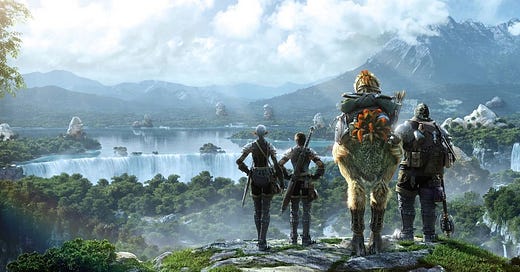As I’ve mentioned in a few articles now, I’ve been preparing for a brand new campaign with a brand new outlook on running the game. My schedule and sensibilities have evolved to the point where really only a sandbox game is feasible. Sandbox games just work better both with the structure of RPGs and with modern schedules. Unfortunately, years of narrative campaigns, video games, and actual plays have conditioned many of the gamers of my generation to expect a more on-rails experience. When you change the paradigm, you upset the expectations of your players and they no longer have any idea what to do. Today we’re going to discuss combating the analysis paralysis that comes with introducing players to their first true sandbox.
To start, I think it’s important to understand what the concept of sandbox means to modern gamers. The people who play RPGs today were introduced to role playing through video games, not pen and paper RPGs. Video games are, by their nature, limited in scope. Even the most open open-world game has some pretty strict limits placed on it. To keep the players from running into these limits, and to allow them to constantly have something to do, video game designers have to run a linear story through the open world and constantly prompt players with side activities to do. You can have a reactive world like Read Dead Redemption II or GTA, but the reactivity is limited to simple if-then statements. If you commit one of the crimes the programmers put into the game, then the police will try to kill you. Any “story” that emerges from this experience is made up by the player and boils down to “This is how I got out of the situation.” This isn’t a problem in video games though because technology is limited. People expect this to be the case. To modern gamers, a sandbox is still a limited experience but with some open areas. Table-top games are different though.
Table-top games are not constrained by technology. Players can truly do anything and the whole world will react to that choice. In Red Dead Redemption II, if you rob a bank and pay off your bounty, nobody remembers what you did. If you commit a crime in a table-top game, the people you wronged will remember no matter what you do. What this means is that you as the Game Master don’t need to create some kind of massive through-line for your game in the form of a main story. If you have players who know how to interface with a sandbox, you can just turn them loose in a world and let them start messing with things. A “story” will emerge as they inevitably stumble over someone whose motives run counter to theirs. Players who aren’t used to that need some kind of structure to get them going though. They need something to initially latch onto before the structure falls away and the totality of the world is laid out before them. What we’re talking about is…a funnel!
That’s right, we have another funnel on our hands. This one is designed to give new players a handful of places and people to interact with and find them things to do. This is one of the main reasons why I think it’s good to start a game in a tavern. It’s a cliche for a reason and that reason is that taverns are full of travelers who drink and talk. It’s a social hub where players can pick up rumors, odd jobs, etc. Have your players start in this environment and have them be there to meet someone in particular. This can be an NPC or a patron player if you're playing that way, but this should be a contact that can give the players a little push into exploration. This can be any task so long as there's a reward offered to the players for completing it and it requires some travel to get to. That way the players earn some money and get to explore along the way. The players should leave the tavern with their “main” quest and a handful of hooks and rumors to look out for.
Over time, you'll want to wean the players off of your provided hooks and move more into a game driven entirely by their actions. This is one of the main reasons why you should include robust factions in your game and encourage players to interact with them. You'll still need to make dungeons and things like that, but you won't need to create anything even resembling a story or a plot. That comes from what the players do.
The sandbox is the goal, but when introducing players to it, especially those without much experience, you may need to gently show them what to do and what all can be found. It won't take long to get them to take the wheel though.




